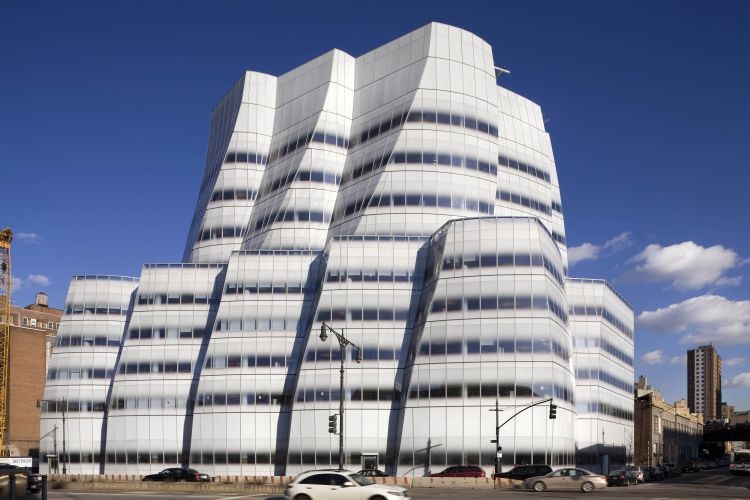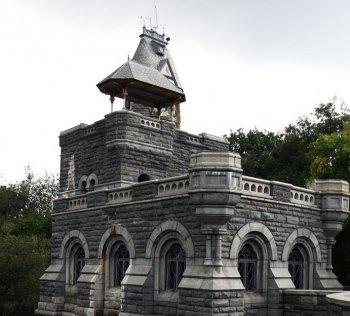IAC Headquarters 555 West 18th St.
Architect: Frank Gehry
Year built: 2004–2007
NEW YORK—Like pleated swags of fabric billowing in the winds that blow off the Hudson River, the glass façade of the IAC building on West 18th Street resembles a tall sailboat gliding up the West Side Highway.
Designed by Toronto-born architect Frank Gehry, the IAC building is the headquarters for entrepreneur Barry Diller’s IACInterActiveCorp. It has housed more than 400 employees of his 60 Internet and media companies since its completion in 2007. IAC is Gehry’s first office building in New York City.
The 10-story building is divided horizontally into two major levels of five stories each, narrowing at the sixth floor. It is divided into five vertical sections at the lower levels and three at the top, further enhancing the appearance of a ship’s sails.
IAC is the first all-glass design by Gehry, and about 1,350 of the building’s glass panels are unique in their shape and degree of twist, each one cold warped, or bent to shape on site so engineers and fabricators could assure correct fit. Horizontal bands of white ceramic coating reflect light away from the building’s interior and reduce glare. The coating is made transparent closer to eye level by increasing numbers of dot patterns in the white coating. One hundred percent of the workspaces have exposure to natural light, aided by interior translucent glass office walls.
The white-glass skin was laid over a skeleton of tilted columns that give the building its unique shape; each one tilted at different angles that were determined during the construction process with the use of laser sighting.
The west ground floor lobby, often used as a venue for press events and product launches, features a unique LED video wall that measures 11 feet tall and 120 feet wide. The video screen is visible to passing cars on the West Side Highway.
Gehry, originally named Frank Owen Goldberg, studied at University of Southern California and the Harvard Graduate School of Design. His other major commissions include the Guggenheim Museum in Bilbao, Spain, the Disney Concert Hall in Los Angeles, and the Dancing House in Prague, the Czech Republic, designed with Croatian-Czech architect Vlado Milunic, with which it shares a similar twisting glass façade and tilted concrete columns.
Gehry recently completed his 76-story residential tower at 8 Spruce Street in Lower Manhattan. The building was originally called Beekman Tower, it now being marketed as New York by Gehry.
New York City Structures: IAC Headquarters
NEW YORK—Like pleated swags of fabric billowing in the winds that blow off the Hudson River, the glass façade of the IAC building on West 18th Street resembles a tall sailboat gliding up the West Side Highway.
Save

SAILING THE HUDSON: Frank Gehry's design for IAC headquarters in West Chelsea was inspired by sailboats. Albert Vercerka/ESTO Photographics
By tim.mcdevitt
Updated:



